If you’re considering enhancing your home, workspace, or garden with a natural touch, incorporating creeper plants is an excellent choice. Creeper plants, which rely on structures like walls, fences, and other plants for support, add significant beauty and aesthetic value to any space. They’re particularly effective for creating private, lush environments and are valued for their versatility and adaptability to various landscapes and urban settings. Not only do creeper plants beautify your surroundings, but they also offer benefits to both the environment and human health. In this article, we’ll explore some popular creeper plants in India that can transform your space.
Top 10 Creeper Plants in India
1. Money Plant
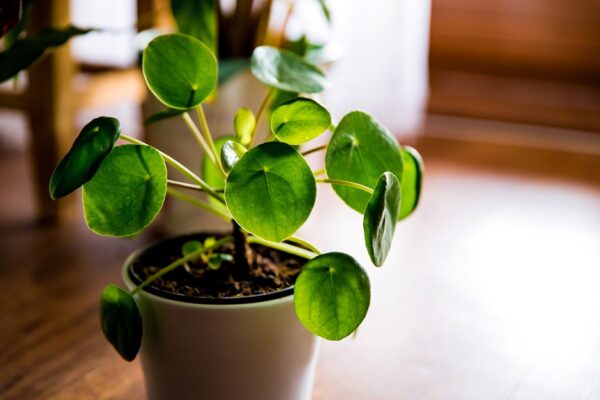
The Money Plant, also known as Pothos or Epipremnum aureum, is one of the most trouble-free plants you can grow. Renowned for its hardy nature, it comes in various shapes and sizes and is a common sight in South Indian households. While it doesn’t produce flowers, it’s often associated with prosperity due to its resilience and longevity. Money Plants are self-seeding, meaning they can grow and propagate without much human intervention. They are easy to propagate from cuttings, making them a popular choice for sharing among friends, family, and neighbors.
2. Bougainvillea
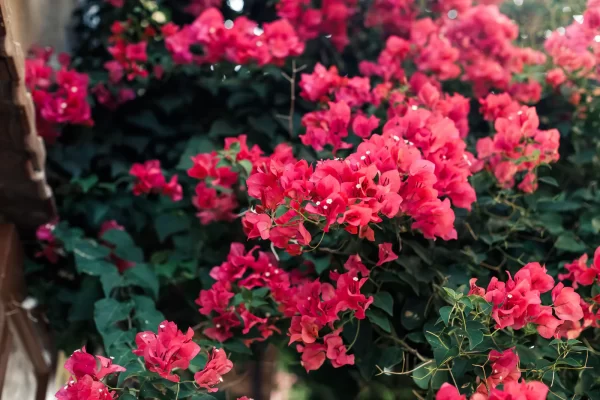
Bougainvillea is a vibrant and rapidly growing creeper plant in India, known for its stunning display of colors. These plants can adorn walls and other vertical structures, quickly capturing attention with their bright hues. Bougainvilleas thrive in outdoor spaces and large gardens. Some varieties can grow up to 40 feet, so ensure ample space in your garden if you choose to plant this creeper. They are less tolerant to frost and prefer warmer climates. Bougainvilleas bloom prolifically in warmer areas and benefit from a slow-release fertilizer during the growing season. Popular varieties include Barbara Karst, California Gold, and Juanita Hattan, chosen based on color preferences.
3. Bleeding Heart Vine
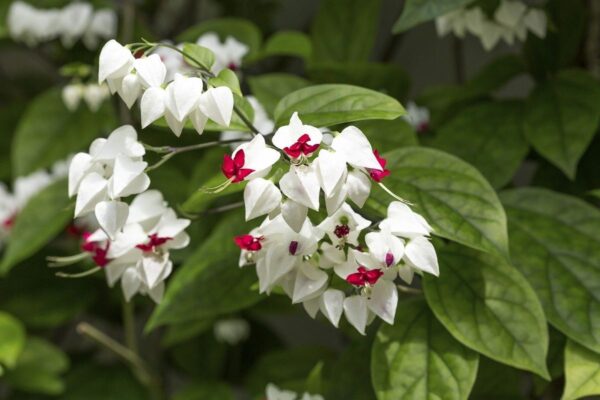
The Bleeding Heart Vine, scientifically known as Clerodendrum thomsoniae, is notable for its unique flowering, which resembles a heart dripping a drop of blood. This creeper can grow up to 13 feet and is admired for its striking red and white flowers. It thrives in well-draining soil and prefers partial shade, though it can tolerate full shade. Regular pruning is necessary to maintain its shape and control growth. The Bleeding Heart Vine is known for its fragrant blooms, which are a blend of honeysuckle, roses, and jasmine, adding a captivating scent to your garden.
4. Flame Vine
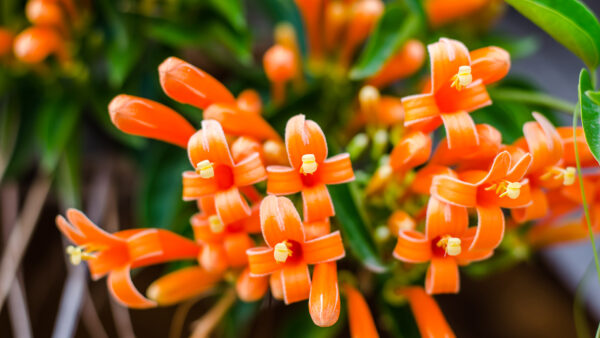
If you’re a fan of bright orange flowers and fast-growing plants, the Flame Vine is an ideal choice. Originating from South America, this creeper is known for its vivid orange blooms. Flame Vines grow up to 5 feet tall and require minimal care. They thrive in full sunlight, needing at least 6-8 hours of direct sun daily but can also grow well in partial shade. Flame Vines are suitable for well-drained pots if garden space is limited. Their minimal maintenance requirements and environmental tolerance make them a favored option among gardeners.
5. Rangoon Creeper
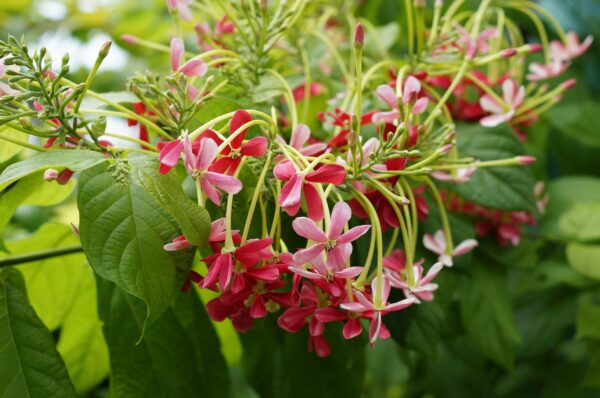
The Rangoon Creeper is cherished for its vibrant red and pink tubular flowers, which add a burst of color and a delightful fragrance to your garden. The color of its flowers changes as they age, and the plant is resilient to various climate changes. Rangoon Creepers are not only beautiful but also beneficial to the environment, attracting pollinators and contributing to biodiversity. The plant’s flowers are used in salads, desserts, and beverages for their subtle flavor, and they are believed to have medicinal properties with potential applications in pharmaceuticals.
6. Morning Glory
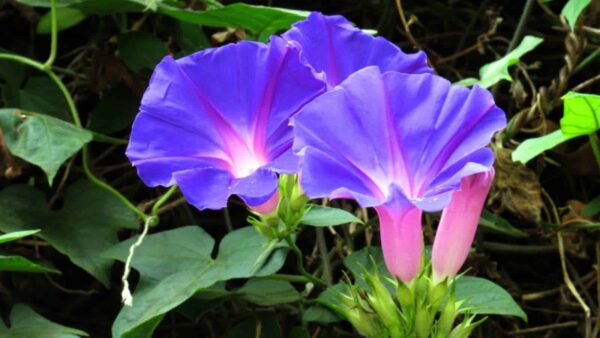
Morning Glory creepers are renowned for their beautiful blooms that open in the early morning and close by the afternoon. This plant symbolizes the appreciation of life’s fleeting moments and is a reminder of the importance of cherishing the transient beauty of nature. Morning Glory flowers attract essential pollinators and contribute to a healthy ecosystem. Despite their short-lived blooms, they play a significant role in plant reproduction and maintaining biodiversity.
7. Ivy
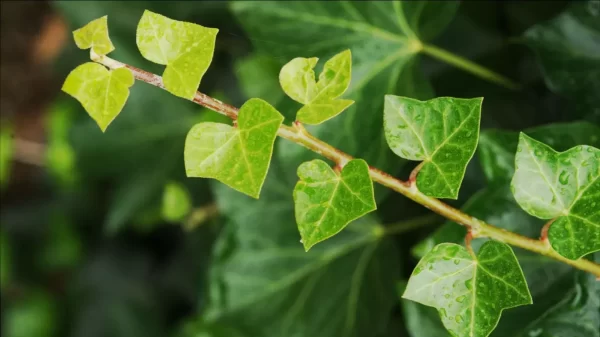
Ivy is a popular choice for those looking to enhance their home’s air quality and aesthetic appeal. Known for its air-purifying properties, Ivy absorbs pollutants such as benzene, formaldehyde, and trichloroethylene. This creeper can be trained to climb walls, fences, and garden structures, providing both privacy and a lush, green cover. Ivy is particularly valued for its role in improving indoor air quality and creating a natural, calming environment.
8. Passionflower
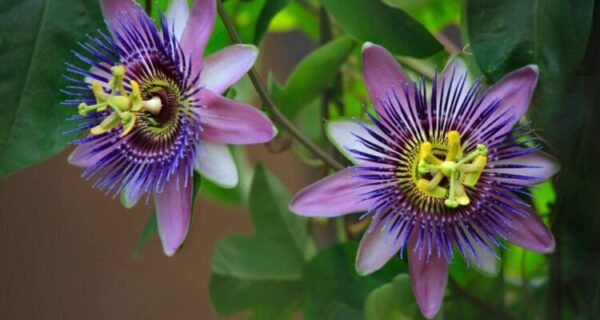
Passionflowers are not only ornamental but also offer medicinal benefits. They are known for their calming effects and are used to treat anxiety, insomnia, and stress. With over 500 varieties, passionflowers can be grown for both their decorative appeal and their fruit, which is used in various culinary applications. The versatility of passionflowers makes them a valuable addition to any garden, providing both aesthetic and therapeutic benefits.
9. Jasmine
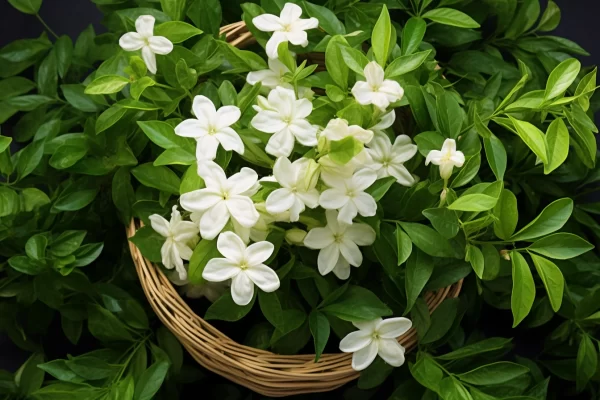
Jasmine, with its intensely fragrant white flowers, is a beloved creeper plant in India. There are over 200 species of jasmine, each offering unique properties. Jasmine creepers thrive in sunny or partially sunny spots and require humid conditions. They are commonly used in religious ceremonies and decorations and are incorporated into perfumes, foods, and beverages due to their pleasant scent. Jasmine flowers are tied to various cultural practices in India and are valued for their mood-enhancing and anxiety-reducing qualities.
10. Curtain Creeper
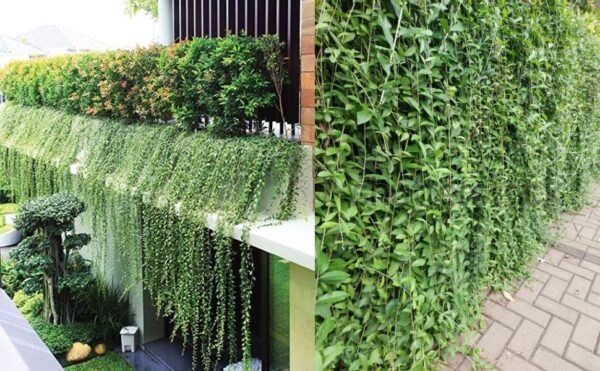
For those looking to cover large areas in their garden, the Curtain Creeper is an excellent choice. Growing up to 13 feet long, it creates a lush, green curtain effect. While it doesn’t have significant medicinal or culinary uses, it serves as an effective ornamental plant, enhancing the visual appeal of garden spaces. Its ability to cover structures and provide a natural curtain makes it a popular choice for gardeners seeking to add a green touch to their landscapes.
Conclusion
Creeper plants offer a unique way to enhance both indoor and outdoor spaces, adding natural beauty and providing various environmental and health benefits. While often confused with climbers, creepers are distinguished by their horizontal growth, relying on other structures for support. In India, creeper plants like the Money Plant, Bougainvillea, and Jasmine hold cultural significance and contribute to improved air quality and ecosystem health. Incorporating creeper plants in your garden or indoor spaces not only enhances their aesthetic appeal but also supports a stable and healthy ecosystem. By choosing the right creeper plants for your space, you can enjoy their beauty and benefits while contributing positively to your environment.



